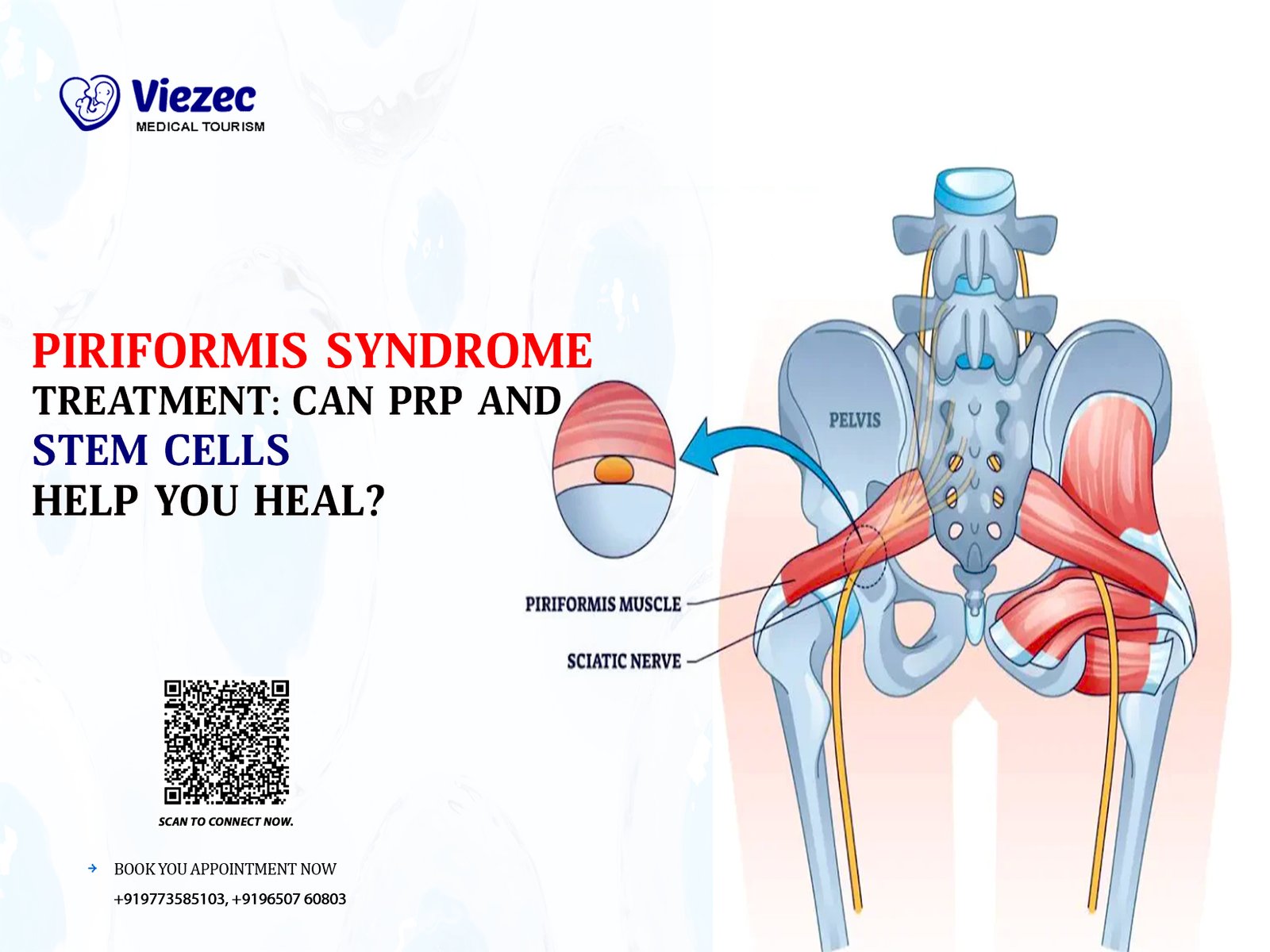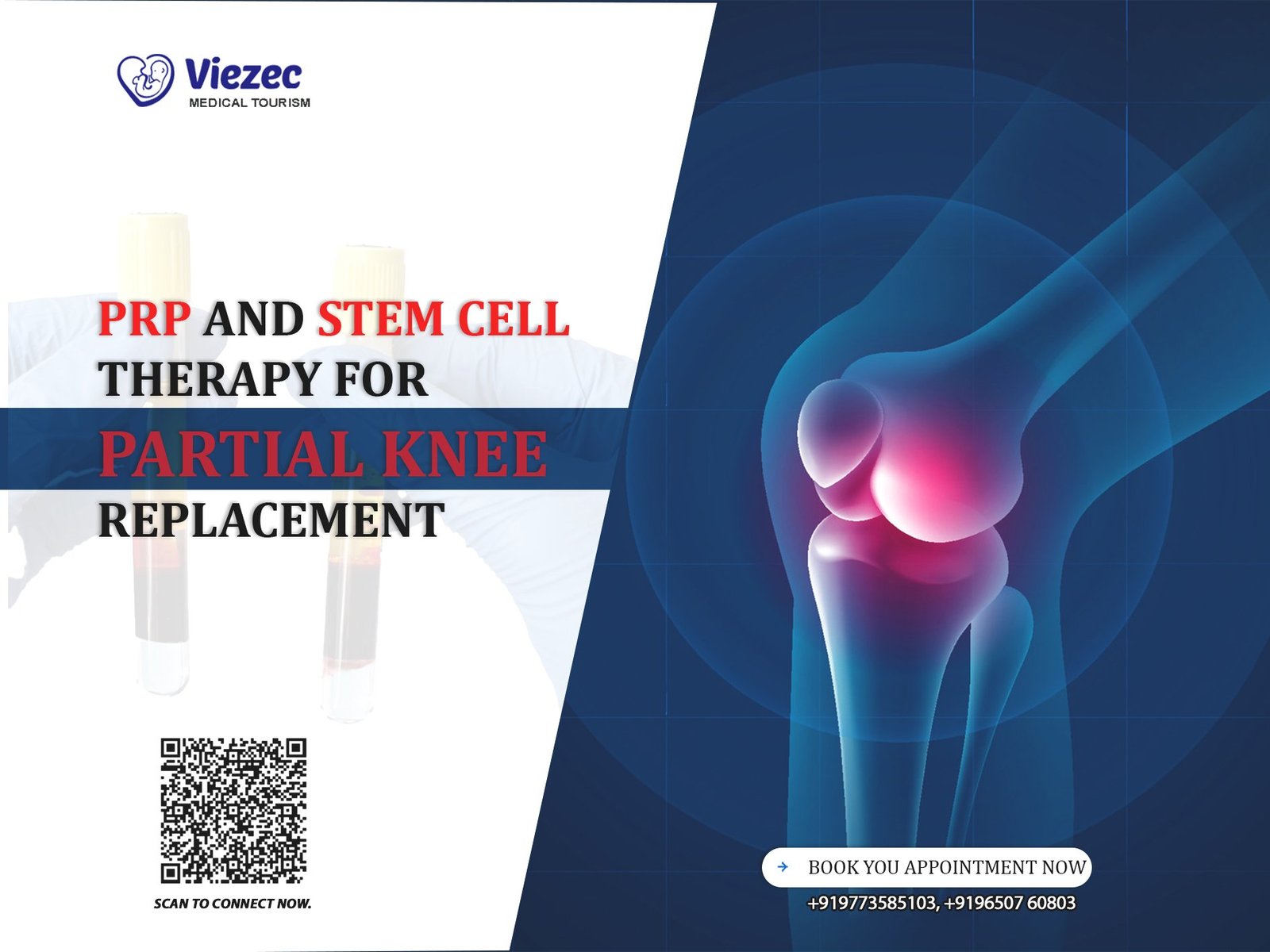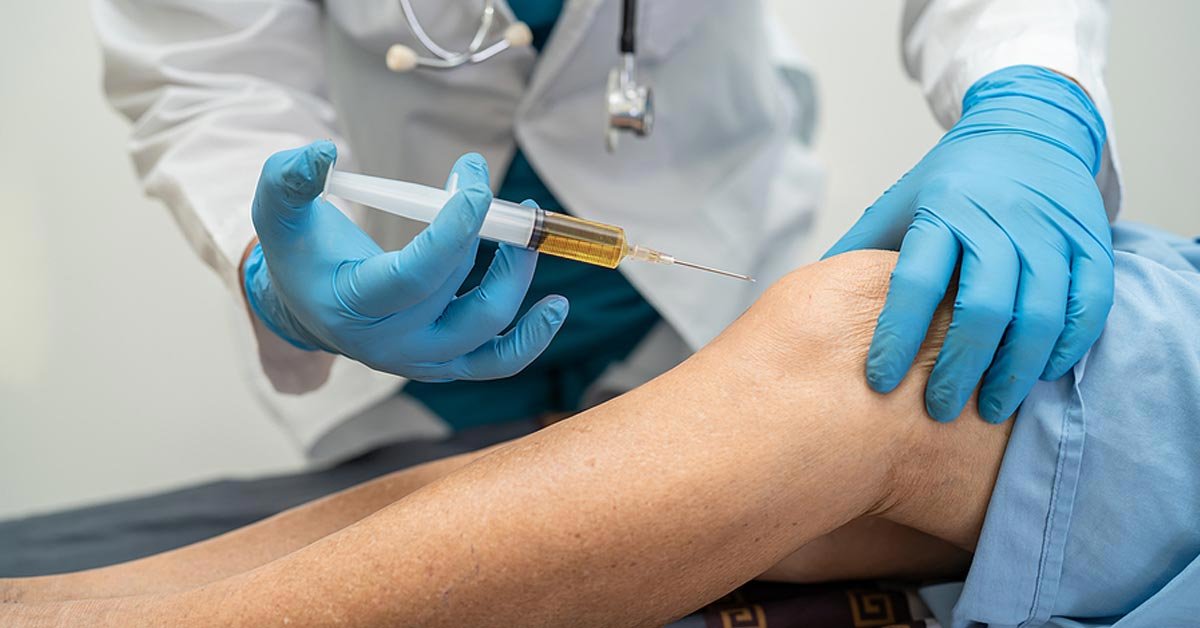KEY TAKEAWAYS
Piriformis Syndrome is a painful and debilitating condition that primarily affects the lower back, hips, and legs, often causing significant discomfort, limited mobility, and muscle stiffness. It occurs when the piriformis muscle irritates the sciatic nerve, resulting in pain that can radiate down the leg. While traditional treatments such as rest, physical therapy, and medications can help manage the symptoms, they may not always provide lasting relief. Recently, regenerative therapies like Platelet-Rich Plasma (PRP) and stem cell therapy have gained attention for their potential to offer long-term healing by targeting the root cause of the pain. In this article, we’ll dive into how these advanced treatments work and explore whether they could be the effective solution you’ve been searching for to overcome Piriformis Syndrome and regain your mobility.
Understanding Piriformis Syndrome: What You Need to Know
What Is Piriformis Syndrome and How Does It Affect the Body?
Piriformis Syndrome occurs when the piriformis muscle, located in the buttock region, spasms and irritates the nearby sciatic nerve. The piriformis muscle plays a crucial role in rotating the hip and stabilizing the pelvis during movement, such as walking or running. However, when this muscle becomes tight, inflamed, or overused, it can compress the sciatic nerve. This compression leads to a range of painful symptoms, including deep, aching pain in the buttocks, numbness, and tingling sensations that radiate down the leg, commonly referred to as sciatica. The discomfort can vary from mild to severe, significantly affecting daily activities and quality of life.
Symptoms and Signs of Piriformis Syndrome
The symptoms of Piriformis Syndrome can vary, but they often include:
-
Pain in the buttocks, lower back, or along the path of the sciatic nerve, sometimes extending down the leg.
-
Numbness or tingling that radiates down the leg or foot.
-
Difficulty sitting for long periods, as sitting can aggravate the muscle spasms.
-
Pain that worsens with activities like walking, running, or climbing stairs.
If you’re experiencing these symptoms, it’s important to consult a healthcare provider for an accurate diagnosis.
Conventional Approaches to Treating Piriformis Syndrome
While PRP and stem cell therapies offer promising new options, traditional methods still play a vital role in treating Piriformis Syndrome. Let’s take a look at these approaches.
Traditional Treatments: Rest, Ice, and Physical Therapy
Rest, ice, and physical therapy are often the first steps in managing Piriformis Syndrome. Resting the affected area and applying ice can help reduce inflammation and alleviate initial pain. Physical therapy focuses on strengthening and stretching the piriformis muscle, as well as other muscles in the hip and lower back, to relieve pressure on the sciatic nerve.
Pros and Cons of Non-Surgical Options
Pros:
-
Non-invasive and generally safe.
-
Helps reduce inflammation and pain without medications.
-
Physical therapy can improve flexibility and muscle strength, which can prevent future episodes.
Cons:
-
May take weeks or months for noticeable relief.
-
Requires regular commitment and consistency.
-
Not always effective for chronic or severe cases.
If conservative treatments don’t provide adequate relief, advanced options like PRP and stem cell therapy might be considered.
PRP Therapy for Piriformis Syndrome: A Breakthrough in Healing
PRP therapy is an exciting treatment option that uses your body’s own healing powers to treat injured tissues, including the piriformis muscle.
What Is Platelet-Rich Plasma (PRP) and How Does It Work?
PRP is a concentrated form of your blood, rich in platelets and growth factors that promote tissue repair. To create PRP, a small amount of your blood is drawn, processed to concentrate the platelets, and then injected into the affected area. In the case of Piriformis Syndrome, PRP is injected directly into the piriformis muscle to stimulate healing and reduce inflammation.
Benefits of PRP in Reducing Pain and Inflammation
PRP therapy has several benefits for treating Piriformis Syndrome:
-
Pain reduction: By promoting the repair of damaged tissues, PRP can help alleviate chronic pain.
-
Reduced inflammation: PRP’s growth factors help reduce inflammation around the sciatic nerve, leading to less irritation and discomfort.
-
Faster healing: PRP accelerates the body’s natural healing processes, potentially reducing the time needed to recover from Piriformis Syndrome.
Stem Cell Therapy: A Revolutionary Option for Piriformis Syndrome
Stem cell therapy takes a more advanced approach by using undifferentiated cells to repair or replace damaged tissues. This treatment has garnered attention for its potential in treating a variety of musculoskeletal conditions, including Piriformis Syndrome.
How Stem Cells Promote Healing in Muscular and Nerve Tissue
Stem cells have the unique ability to transform into various types of cells, including muscle cells and nerve cells. When injected into the piriformis muscle, stem cells can help repair the muscle tissue, reduce inflammation, and even promote the regeneration of nerve fibers that may have been damaged by chronic pressure from the muscle spasm.
The Role of Stem Cell Therapy in Pain Management
Stem cell therapy can play a significant role in pain management by:
-
Restoring function: By regenerating damaged tissue and improving muscle function, stem cells can reduce the need for long-term pain management.
-
Reducing chronic inflammation: Stem cells have anti-inflammatory properties, which can help calm the persistent inflammation associated with Piriformis Syndrome.
-
Improving mobility: By repairing the damaged tissues, stem cells help restore the normal function of the hip and lower back muscles, enhancing overall mobility.
Comparing PRP and Stem Cells: Which Is Right for You?
While both PRP and stem cell therapy are effective in treating Piriformis Syndrome, they differ in their approach and outcomes. Let’s compare the two treatments.
Key Differences Between PRP and Stem Cell Therapy
-
PRP: Uses your body’s platelets to promote healing. It’s best for treating mild to moderate injuries and inflammation.
-
Stem Cell Therapy: Uses undifferentiated stem cells that can transform into the tissues needed for repair. It’s ideal for more severe cases where muscle or nerve tissue regeneration is required.
When to Choose PRP vs. Stem Cell Treatment
-
PRP is a great option if you’re dealing with muscle inflammation and mild to moderate tissue damage. It’s less invasive and requires a shorter recovery time.
-
Stem Cell Therapy may be more appropriate if you’ve experienced severe tissue damage or have had chronic Piriformis Syndrome that hasn’t responded to other treatments.
Patient Experiences: Success Stories with PRP and Stem Cell Therapies
Many patients have found relief from Piriformis Syndrome through PRP and stem cell therapies. These treatments have allowed them to return to their daily activities with reduced pain and increased mobility.
Real-Life Impact of PRP Treatment on Piriformis Syndrome
Patients who have undergone PRP therapy often report a significant reduction in pain and discomfort. For some, the ability to sit for longer periods without pain or engage in physical activities they had previously avoided was life-changing. PRP has also allowed many individuals to avoid surgery, making it a non-invasive alternative for long-term relief.
How Stem Cells Helped Patients Overcome Chronic Pain
Stem cell therapy has provided relief for patients who suffered from chronic Piriformis Syndrome. Many of these individuals had tried physical therapy, medication, and other treatments without lasting results. After receiving stem cell injections, they experienced noticeable improvements in pain reduction and functional mobility, allowing them to resume their normal routines.
Making an Informed Decision: Should You Try PRP or Stem Cell Therapy?
Before deciding whether PRP or stem cell therapy is the right choice for treating Piriformis Syndrome, it’s essential to consider various factors. Consulting with a qualified healthcare provider will help you make an informed decision based on your specific condition and treatment goals.
Factors to Consider Before Opting for Advanced Treatments
-
Severity of your condition: If your Piriformis Syndrome is chronic or has not responded to conservative treatments, PRP or stem cell therapy may be beneficial.
-
Your overall health: Both treatments are generally safe, but a healthcare provider can help determine if you’re a suitable candidate based on your medical history.
-
Cost and insurance coverage: While these therapies can be effective, they can also be costly, and insurance coverage may vary.
Are You a Suitable Candidate for PRP or Stem Cell Therapy?
Your healthcare provider will assess your symptoms and overall health to determine if you’re a good candidate for PRP or stem cell therapy. If you’ve tried traditional treatments without success or want to avoid surgery, these advanced therapies could be the solution you’ve been looking for.
FAQs
Is Piriformis Syndrome common, and who is most at risk?
Piriformis Syndrome is relatively common, especially in individuals who engage in activities that involve repetitive hip movements or prolonged sitting. Athletes, especially runners and cyclists, as well as people with sedentary lifestyles, are most at risk.
What other conditions can mimic Piriformis Syndrome?
Piriformis Syndrome can often be confused with other conditions such as herniated discs, sciatica, and muscle strain. A thorough evaluation is necessary to differentiate between these conditions and properly treat them.
How long does it take to recover from Piriformis Syndrome?
Recovery time varies depending on the severity of the condition and the treatment approach. With physical therapy and conservative treatments, it may take a few weeks to a couple of months, while advanced therapies like PRP or stem cell treatments can accelerate the healing process.
Are there any side effects from PRP or stem cell therapy?
PRP and stem cell therapies are generally safe, with minimal side effects. Some individuals may experience temporary pain, swelling, or bruising at the injection site. However, these effects are usually mild and resolve on their own.
Can lifestyle changes help prevent Piriformis Syndrome from returning?
Yes, making lifestyle adjustments such as improving posture, strengthening the muscles surrounding the pelvis, avoiding prolonged sitting, and stretching regularly can help prevent Piriformis Syndrome from recurring.
What should I expect during a PRP or stem cell therapy session?
Both PRP and stem cell therapy sessions are relatively quick and minimally invasive. The procedure involves drawing blood (for PRP) or harvesting stem cells, followed by an injection into the affected area. There is no downtime, and most patients can resume normal activities after the procedure.
Can Piriformis Syndrome lead to permanent nerve damage?
In most cases, Piriformis Syndrome does not lead to permanent nerve damage. However, if left untreated for an extended period, the pressure on the sciatic nerve can worsen, potentially causing lasting issues. Early intervention helps prevent long-term damage.
Are PRP and stem cell treatments covered by insurance?
Coverage for PRP and stem cell treatments varies by insurance provider and policy. While some insurance plans may cover these therapies, many do not. It’s best to check with your insurance provider to determine your coverage options.











